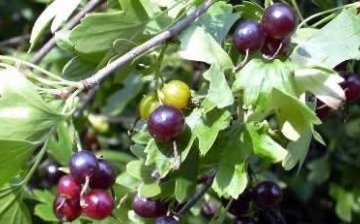Golden currant and caring for it
Golden currant has a rather unusual appearance, because of which this shrub is very often considered a kind of hybrid of gooseberries and currants. And this is not surprising, because the gooseberry leaves, dotting the long branches without thorns, and the many clusters of black oblong berries evoke just such associations.
In fact, golden currant has a very specific pleasant taste, and there is practically no need to care for it. The shrub will take root well in areas with a wide variety of soils, from sandy to clayey. In general, the success of cultivation and the yield of this plant, first of all, depend on the quality of the planting material and its correct planting. So, seedlings should have a branched root system without any signs of drying out. They should be planted at the very beginning of spring in large pits fertilized with compost or manure, as well as wood ash and superphosphate. In this case, it is very important that the root collar is buried at least five centimeters, and all shoots must be cut off, leaving no more than seven centimeters above the soil level.
As for caring for golden currants, everything is much simpler here: the plant only needs to be watered from time to time, and this should be done exclusively in drought. You probably won't have to fight diseases and pests either. There is no particular need for regular feeding, however, in the fall, a little humus and ash can be introduced around the bushes (four to five kilograms and half a glass, respectively).



